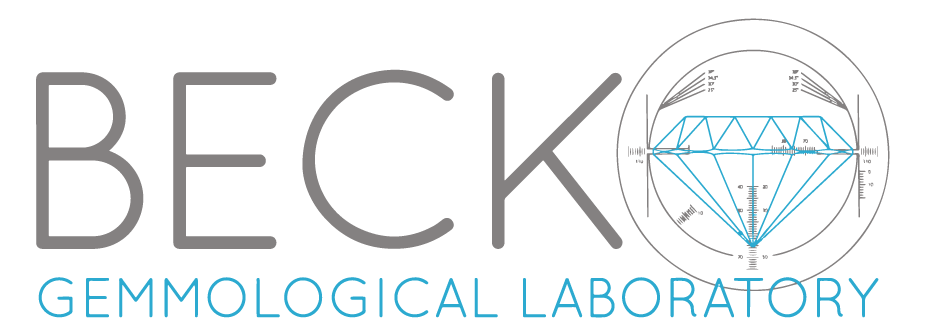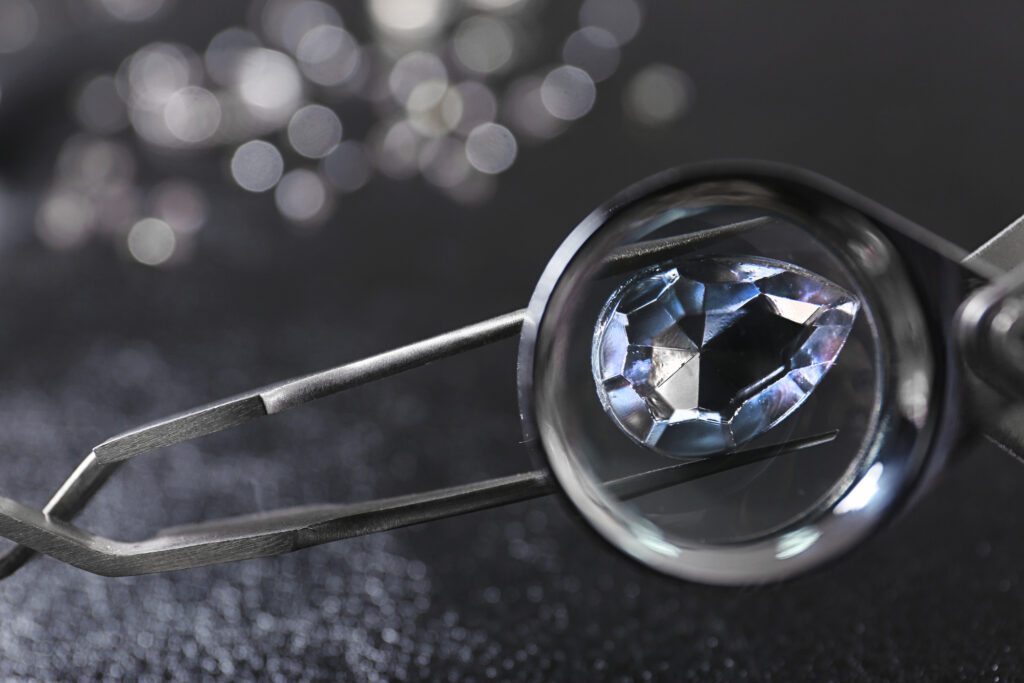

At Beck Gemmological Laboratories, you get an in-depth look into every gem and piece of jewellery you have to leave you feeling informed and confident.
CUT: The way a diamond is cut and polished is vital. It is the precision and the delicacy of the cut that dictates the maximum amount of light the diamond will refract and reflect. The better its cut, the greater will be its brilliance, sparkle, and fire.
COLOR: Most diamonds look colorless, but there are many subtle shade differences. The closer a diamond is to having no color, the more valuable it becomes. Diamonds with no hint of color at all are very rare. “Fancy” colored diamonds are also very rare, exhibiting a strong color that is beyond the normal D-to-Z diamond color-grading scale.
CLARITY: Thanks to nature, every diamond is unique; with each one possessing its own individuality. Minute crystals, pinpoints, feathers, and more, can all exist inside your diamond. These natural characteristics are called “inclusions” and help distinguish your diamond from any other.
CARAT (weight): A diamond’s weight is the simplest of its characteristics to measure. From the earliest times this has been used to calculate the value of a diamond. Each carat is divided into 100 points. For example, a quarter of a carat is 25, written as 0.25 carats. Weighing an unmounted diamond is simple; but once in a jewellery setting, it is only possible to estimate its weight by using special gauges and formulas.
PLOT OF INCLUSIONS: A plot of inclusions given as a “fingerprint” card to distinguish your diamond from all others. DIGITAL IMAGE OF ITEM: If requested, you will receive a computer image PDF file of your appraisal. Upon further request, a picture of the laser inscription on your diamond may be attached to the appraisal.
DIGITAL IMAGE OF ITEM: If requested, you will receive a computer image PDF file of your appraisal. Upon further request, a picture of the laser inscription on your diamond may be attached to the appraisal.
APPRAISED VALUE: At the time of your consultation, you will be given the wholesale value; as well as the estimated retail replacement value which will be used for insurance purposes.
CORPORATE SEAL: All written appraisals are finished off with a corporate seal stating that the appraisal was done by a graduate gemologist of the Canadian Gemmological Association.
Appraisals that are required by insurance companies before they will insure a piece of jewellery beyond a certain dollar amount. Jewellery appraisals provide a safety net to the full value of your jewellery in the event of loss, damage, theft, or misplacement. Many insurance companies require a written appraisal by a certified gemologist and appraiser for proper coverage of your item. Check with your insurance company to see what your policy includes. Know your policy!
Estate appraisal values are determined by fair market value. An estate appraisal is a comprehensive description supporting an estimate of the value to be used for tax purposes. Fair market value is “the price at which the property would change hands between a willing buyer and a willing seller, neither being under any compulsion to buy or sell and both having a reasonable knowledge of the relevant facts.”
Estate appraisals are performed for a variety of different purposes:
Come in and get an appraisal done while you wait. Have our Graduate Gemmologist take a look at your jewellery and gems. Call ahead to book an appointment at our Southside location.

By Appointment
Mon – Wed 10am – 7pm
Thur-Fri 10am-8pm
Sat 10am – 7pm
SUN 11pm – 6pm
780-485-9999
375 St Albert Trail, AB, Canada
E-Mail lilyan@beckgemlab.com

MON – WED 10am – 6pm
THU – FRI 10am – 8pm
SAT 10am – 6pm
SUN: 11am-6pm

Drop-Off Location
MON – FRI: 10:00 am – 6:00pm
SAT 9am – 5pm SUN: Closed
#103 6527 Sparrow Drive Leduc Alberta T8E 7C7
E-Mail karin@beckgold.com
Jay Lonsdale
Local Representative
1-780-267-5056